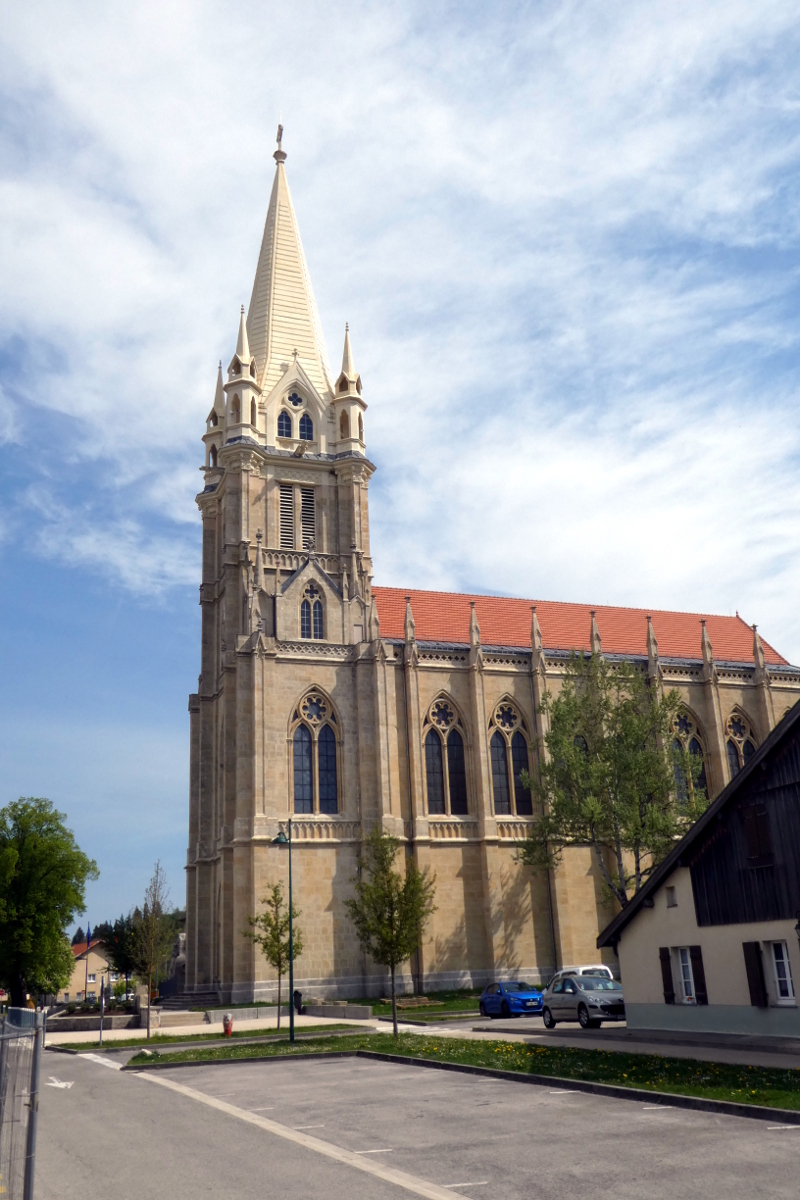In 2022 > Marion Lemaître
The translation of the relics of Saint Pius from Rome to Besançon and from Besançon to Doubs, in 1781, is at the origin of the construction of the current church in Doubs. The bones of this unknown martyr who lived under the Roman Empire were found in Rome, in the catacombs, accompanied by a vial of blood. Faced with the influx of pilgrims from all over the region, the church was considered too small and it was decided to build a new one according to the drafts of the architect Martin Béliard to replace the primitive medieval building which was too dilapidated. The new church was blessed in 1869 but with an unfinished bell tower which had to wait for its spire until 1931. The spire was restored in 2020.
It is a neo-Gothic style church whose imposing dimensions are surprising for a village which had only 400 inhabitants at the time of its construction. It consists of a bell tower opening onto a single nave preceding the choir to which is attached the chapel housing the shrine of the relics of Saint Pius. A narrow circulation gallery runs on each side of the nave and extends in the form of a triforium. Bays with historic or simply decorated stained glass windows (by Maréchal, decorative artist in Metz) illuminate the nave and the choir at the level of the triforium as well as the chapel of Saint Pius. From the primitive church, there remains a painted wooden panel from the 15th century representing the crucifixion, 3 gilded wooden statues from the 18th century, Saint Martin, Saint Agatha and Saint Barbara, and a statue of the Virgin crushing the serpent, as well as a baptismal tank (1560).
GPS : 46,739577 / 6,230343


